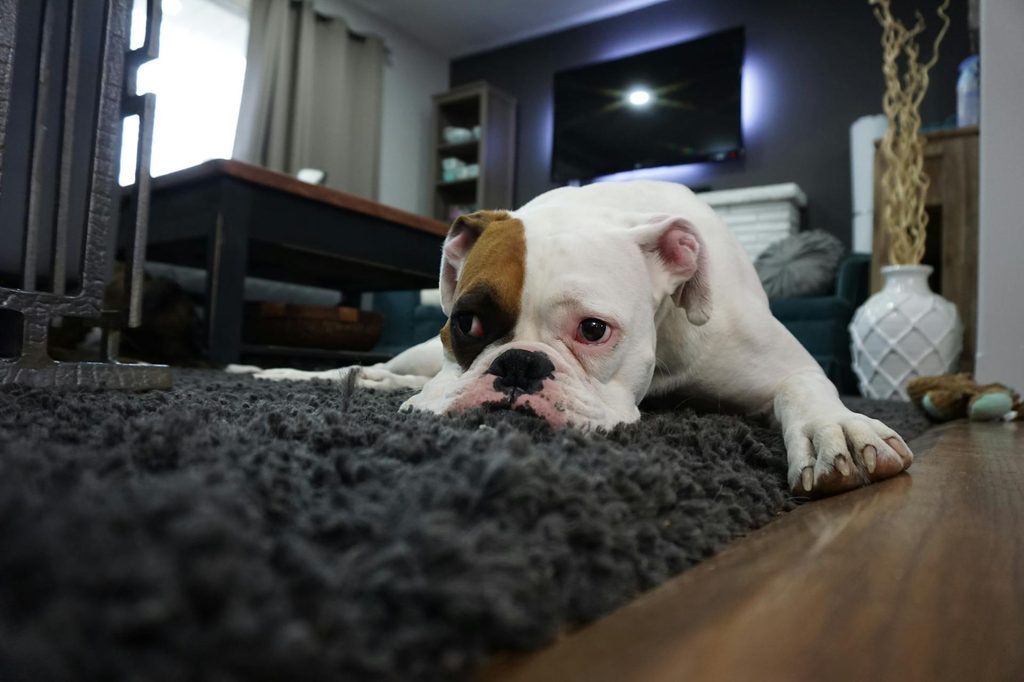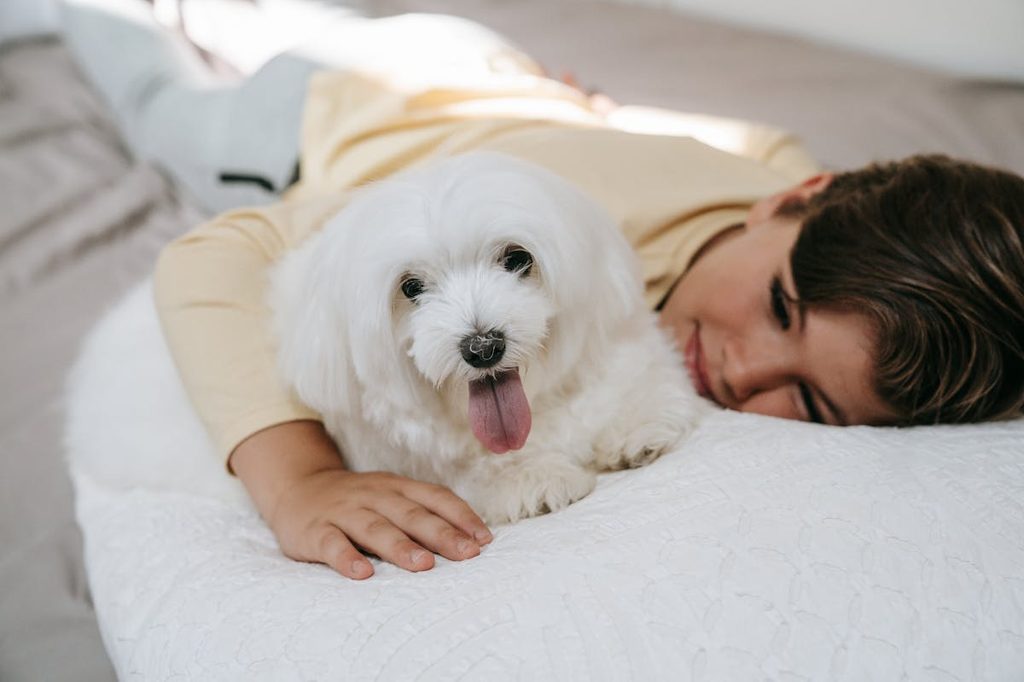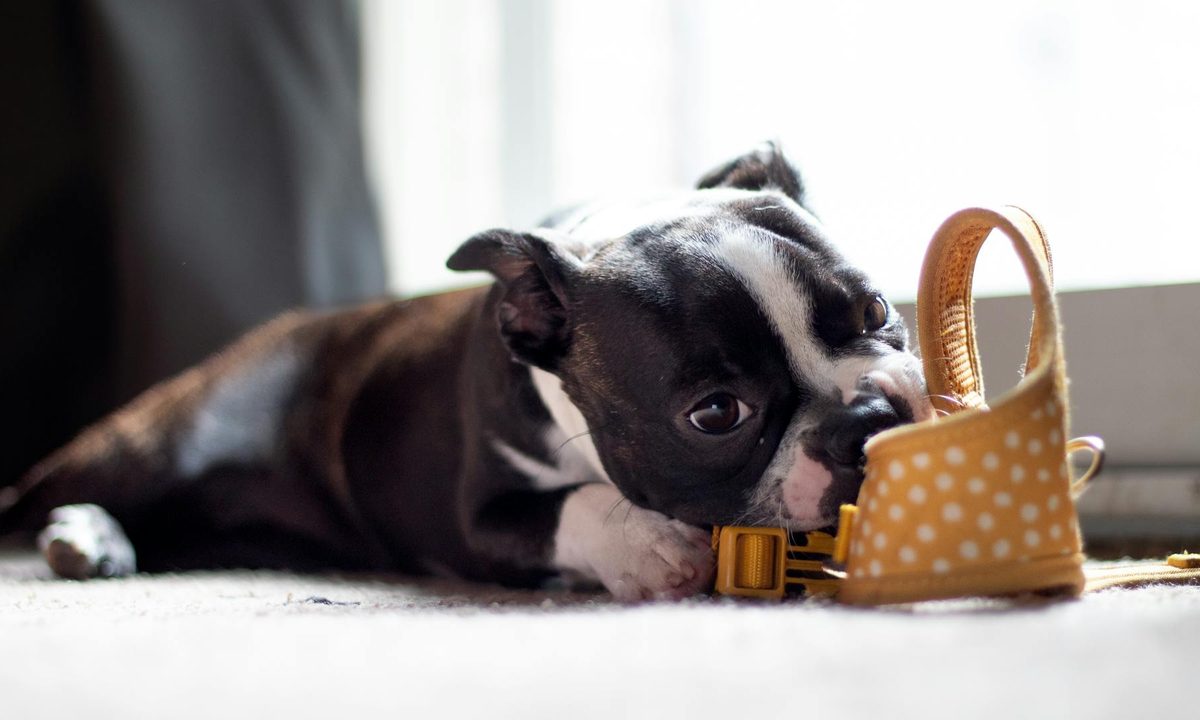You left your home with a couch full of brand-new throw pillows with tags still on after a Home Goods or Target haul. In need of a coffee, you make the last exit, head to the local shop, and come back with your drink of choice in hand. You walk in the door ready to snuggle with your dog (and those throw pillows).
The problem? The throw pillows have been destroyed, and the couch is in dire straits. Your jaw is on the floor, as is the coffee you dropped.
The tempting thing to do would be to pick up your jaw off the floor and start yelling. Your aim is likely to teach your dog a lesson and — if we’re being honest — relieve your frustration ASAP. However, yelling at a dog for destructive behavior can be harmful and ineffective. Here’s why, plus better ways to handle the situation (and save your pillows).
Why do dogs destroy things?

Before discussing how to solve destructive behavior, it might help to imagine yourself in your dog’s shoes (especially if your shoes were Fido’s latest targets). Understanding why dogs engage in destructive behavior can help you empathize and strategize an approach that addresses your pup’s pain points.
- Teething. We don’t call them “fur babies” for nothing. Like human infants and toddlers, puppies’ teeth between about 3 weeks and 6 months old. Extra chewing is one side effect, and your home may become collateral damage.
- Hunger. Dogs that aren’t eating enough may turn to other sources, including items in the home. A vet can help you navigate food choices, including the type of diet you feed your pet, frequency, and serving sizes.
- Boredom. Dogs can get mighty bored when left alone all day, especially if they don’t have stimulation in the form of toys they love. Chewing, scratching, rummaging through the trash, and other destructive behaviors are boredom busters.
- Lack of exercise. Pets that lack exercise need to get their energy out somehow, and that “somehow” may involve tearing through your house (and everything in their wake). A lack of physical activity can also often mean the dog gets out less, leading to accidents even after being housebroken.
- Stressed/anxious. Some dogs can become stressed from a loud noise outside, a change in your schedule, or separation anxiety. Chewing and other destructive tactics may be soothing.
Why yelling at a dog is a bad idea

Yelling at a dog can become a default, especially because you’re (understandably) upset about destroyed items in your home. However, the tactic doesn’t work well for several reasons, including:
- Fear. Yelling at a dog may scare them, potentially harming your bond.
- Immunity. Your dog may become desensitized to your yelling and start tuning you out after a while.
- Attention. Some dogs may feel like getting yelled at is a win if they were looking for your attention.
- Confusing. Unless you catch your dog in the act, they aren’t going to associate your reaction with whatever they destroyed. Dogs’ brains don’t reason like that, so sticking their nose in a puddle of pee and yelling “No” hours later won’t solve the issue.
What to do instead of yelling at a dog for destructive behavior

You know why dogs destroy things and that you shouldn’t yell in response. However, you don’t want the behavior to continue — understandably so. The good news is that there are ways to stop the destruction without raising your voice to level 10. These tips will help you avoid yelling at your dog and the need to buy a new pair of shoes monthly.
- Breathe. Step one: Breathe. Taking a beat in between noticing a destroyed item and reacting can stop yelling before it happens.
- Call the vet. If the behavior is new and persistent — or you have concerns about your dog’s diet or separation anxiety — give the vet a ring. They can offer tips that get to the root of the problem, which should have a home-saving ripple effect.
- Dog-proof your home. Limit your dog’s access to items you don’t want them to chew, such as by putting shoes behind closet doors and moving throw pillows to a locked bedroom while you’re out. You can use child locks on garbage cans, too.
- Exercise them. Before you leave, take your dog for a long walk. If you’ll be gone for several hours, hire a dog walker or ask a pal or neighbor to check in and let the pup out or go for a walk. Tired dogs are more likely to sleep rather than chew.
- Give them food and water. Ensure your dog is fed and has access to water so they don’t need to “hunt.”
- Try toys. Experiment with different toys, like hard chews and puzzles, to keep your pet engaged.
- Confined area. This step may be temporary or permanent. However, confining your dog to a specific area, like one room away from your treasured items, can help. Ensure this den has plenty of toys, a cozy place to rest, and access to water. Otherwise, your dog may find ways to get creative.
- Watch and redirect. When you are in the home, watch your dog. If you notice them going after something they shouldn’t, a firm “no” and redirect to something they can play with, like a toy, is best. Treat them with praise or a small something for redirecting.
- Call a trainer. Sometimes, you may need more support. A certified professional dog trainer who uses positive reinforcement can help you strategize.
Closing thoughts

Dogs engage in destructive behavior for numerous reasons, including teething, boredom, stress, separation anxiety, and lack of exercise. While you may understand why your dog destroyed something, you don’t have to like it. Still, yelling at a dog only creates confusion and fear, which likely won’t stop the issue.
Instead, ensure your dog has plenty of food, water, and toys and has received enough exercise before you leave the home. You may need to confine them to a room, at least temporarily, and dog proofing your living space is also a good idea. Your vet and a dog trainer who uses positive reinforcement can support you and your pet.




